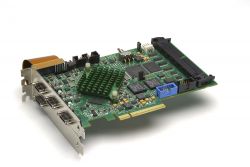How to Train Your Robot—for Today, and for Tomorrow
When using virtual assistants, companies need to employ the right technology but also keep humans in the loop, say experts at Earley Information Science roundtable
Companies and consumers are both captivated and frustrated by virtual assistants. They are dazzled by the ability of a Siri or a Watson to find just the right needle in the data haystack. But they are put off when other "intelligent" assistants prove to be anything but, offering searches that turn up the wrong things or leaving the user in limbo.
The discussion, "Training the Robots: Evolving Virtual Assistants and the Human-Machine Partnership," was led by Seth Earley, CEO of EIS, and Dino Eliopulos, Managing Director of EIS, and featured guest speakers Rowan Curran, an analyst at Forrester Research, and Manuel Ebert, a data scientist and founder of summer.ai.
Todays virtual assistants can provide huge advantages, the panelists agreed, but only if the relevant data is organized in the right way, the virtual assistants have been "trained" properly with the right technology, and humans are involved at sensitive junctures to make sure that the interaction with machines is as helpful and efficient as possible. Even if the language used by the assistant in the interaction is somewhat stilted, users will be forgiving so long as their goals are being met in a reasonable period of time.
All that said, "we are at a very early stage" of development, Eliopulos noted. That makes it critically important to take full advantage of existing systems, said Curran.
"We will get smarter over time," Earley added, alluding to advances that will ultimately result in fully automated transactions conducted by intelligent agents equipped with natural language processing.
The key to reducing current frustrations and producing more natural interactions is to understand that virtual assistants arent meant to replace humans but to augment them.
Human-machine partnerships are needed, Curran said, as the systems move from "primarily taught to primarily learned" functionality.
For now, "AI only gets you part way there, and the missing pieces will frustrate and alienate users," said Ebert, the summer.ai founder. "Hybrid AI keeps humans in the loop to get to 100 percent." Think of AI, he said, as the "extension of a human, not as a competitor," and as a tool "to scale humans."
The roundtable included a real-time survey of the webinar attendees. Among the results:
40% of the respondents are still in an exploratory stage with AI, while an equal number are already employing it in a business process
60% use it for internal access to knowledge, while three other uses each attracted 10%: improving customer engagement, enabling self-service support and augmenting call-center workers
73% see the current value of AI as a step in an evolutionary process, but 18% say that no clear value has been identified yet
To access the roundtable, please use this link: http://info.earley.com/roundtable-virtual-assistant-human-machine-partnership Also see this related blog.
About Earley Information Science: EIS helps organizations establish a strong information architecture and management foundation to drive strategic business outcomes and enhance operational performance. EIS has more than 20 years of experience in working with Fortune 1000 organizations globally across many industries. Corporate headquarters are in the Boston metropolitan area with consultants working on projects around the world. For more about Earley Information Science, visit our website at http://www.earley.com or contact us at info(at)earley(dot)com.
Featured Product

BitFlow Introduces 6th Generation Camera Link Frame Grabber: The Axion
BitFlow has offered a Camera Link frame grabbers for almost 15 years. This latest offering, our 6th generation combines the power of CoaXPress with the requirements of Camera Link 2.0. Enabling a single or two camera system to operate at up to 850 MB/S per camera, the Axion-CL family is the best choice for CL frame grabber. Like the Cyton-CXP frame grabber, the Axion-CL leverages features such as the new StreamSync system, a highly optimized DMA engine, and expanded I/O capabilities that provide unprecedented flexibility in routing. There are two options available; Axion 1xE & Axion 2xE.
The Axion 1xE is compatible with one base, medium, full or 80-bit camera offering PoCL, Power over Camera Link, on both connectors. The Axion 2xE is compatible with two base, medium, full or 80-bit cameras offering PoCL on both connectors for both cameras.
The Axion-CL is a culmination of the continuous improvements and updates BitFlow has made to Camera Link frame grabbers.
